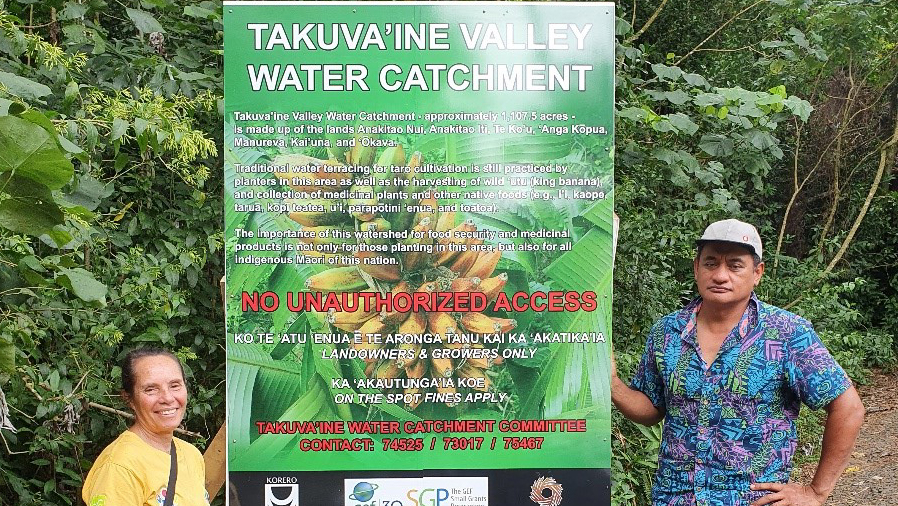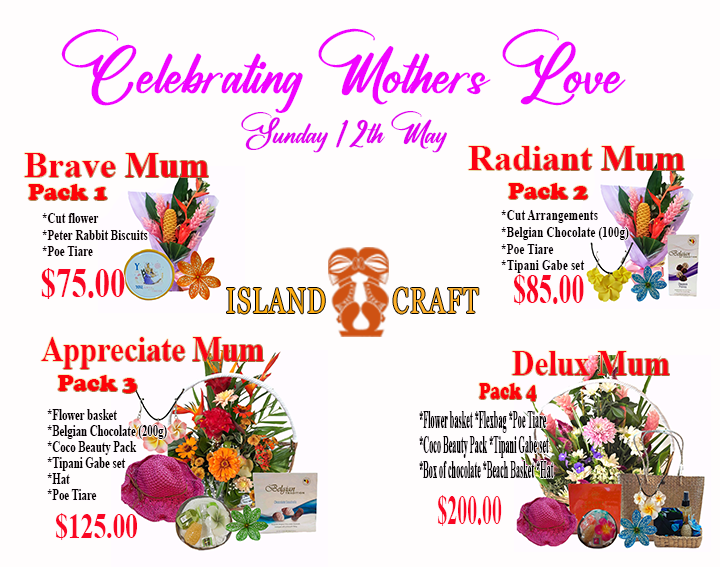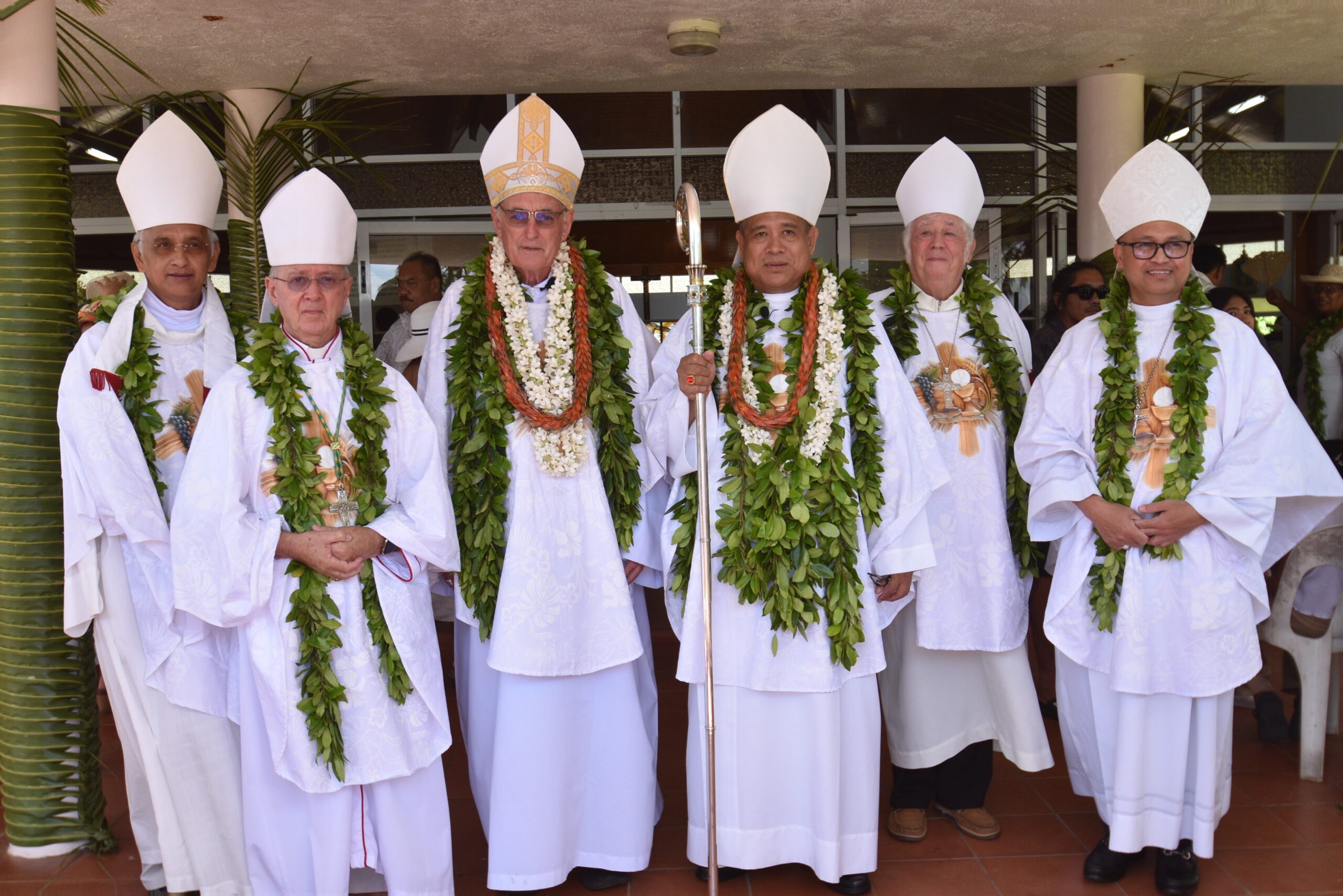Takuva’ine Valley Water Catchment signage installed
Tuesday 18 January 2022 | Written by Supplied | Published in Environment, National

Celine Dyer (left; landowner/grower and member of the Takuva’ine Water Catchment Committee) with Dr Teina Rongo (right; chairperson of Kōrero o te ‘Ōrau) and ‘Ātui’anga ki te Tango students Petero Rea and Tutero Tunupopo. PHOTO: JACKIE RONGO/22011711
To start off 2022 on a positive note for the environment and to raise awareness on a very special place on Rarotonga, the Takuva’ine Water Catchment Committee have installed new signage at the base of the track and replaced an old broken “STOP” sign further up leading to the traditional taro terraces and ‘ūtū planting area in the valley.
The signage was installed with the support local NGO Kōrero o te ‘Ōrau (KO).
Celine Dyer, TKV Water Catchment Committee member in a statement, said: “We have had much foot traffic coming up the valley over the years, and not all visitors are respectful. Some leave their rubbish behind or go off track, and are generally unaware of the area’s purpose in supplying water to parts of Rarotonga. On top of that, all the growers have experienced their taro and toatoa plots raided by thieves.”
“Replacing damaged signs and installing new ones has been on our list of ‘Things To Do’ for a while, and the TKV Water Catchment Committee felt the time was right to install new signage also as a deterrent to would-be thieves.
“We are also grateful to Ko̅rero o te `O̅rau for the signage boards and the work they are doing in the valley bringing awareness to the importance of these watershed areas and the critical services they provide.”
For the last four years, the Takuva’ine Water Catchment Committee has been working with Kōrero o te ‘Ōrau to utilise the area and teach young Cook Islanders during their ‘Ātui’anga ki te Tango (AKTT) school holiday programme to value their natural resources, and to see the connectivity of the various habitats stretching from the mountain to the sea.
The AKTT programme objectives are to connect children with their heritage – to traditions that bind them to the environment and their culture of our nation.
Kōrero o te ‘Ōrau has been carrying out a reforestation projects in the Takuva’ine Valley where AKTT students were involved in clearing invasive plants and replanting many ‘ūtū (king banana) trees – a food crop that used to be common in the Takuva’ine Valley over 30 years ago. This hands-on approach has given students a better understanding of their environment and how to manage their land and resources in the face of climate change and potential development threats.
A documentary was produced on this effort, which has been shared around the world, including on US-based media network CNN International’s inaugural Call to Earth Day on November 10, 2021.
Jackie Rongo, Kōrero o te ‘Ōrau’s secretary, said: “We seek permission to take our students up for educational purposes and the TKV Water Catchment Committee are very accommodating.”
“We give the ‘rules’ to each group before going in – a reminder to respect the taro and ‘ūtū plantations, stay on the track, bring out anything you bring in, and no defecating or peeing as this is a water catchment.”
Kōrero O Te ‘Ōrau has also been building a SCUBA programme for AKTT students. This ties in with KO’s Operation Taramea – a Crown-Of-Thorns Starfish eradication programme – that started in 2020 with keen and passionate volunteers around Rarotonga jumping in to tackle the taramea outbreak situation, shifting towards a student-led operation with on-going monitoring alongside coral reef research that the students are learning how to conduct. This includes monitoring the Avarua harbour area that links directly to the Takuva’ine water catchment.
Kōrero o te ‘Ōrau chairperson Dr Teina Rongo said: “We are grateful to our generous community and international partners of the Cook Islands Ministry of Agriculture, GEF Small Grants Programme, Nia Tero, UNESCO and the Cook Islands Ministry of Education, and Synchronicity Earth that make the on-going work in this water catchment and beyond as well as education of our future generations of our natural environment from Ridge to Reef possible.”
“Other local partners including Bank of the Cook Islands, Vodafone, and CITC have also been instrumental by supporting KO activities that build the capacity and confidence of our youth. Meitaki Ma’ata to parents and guardians also for their on-going support.”









































